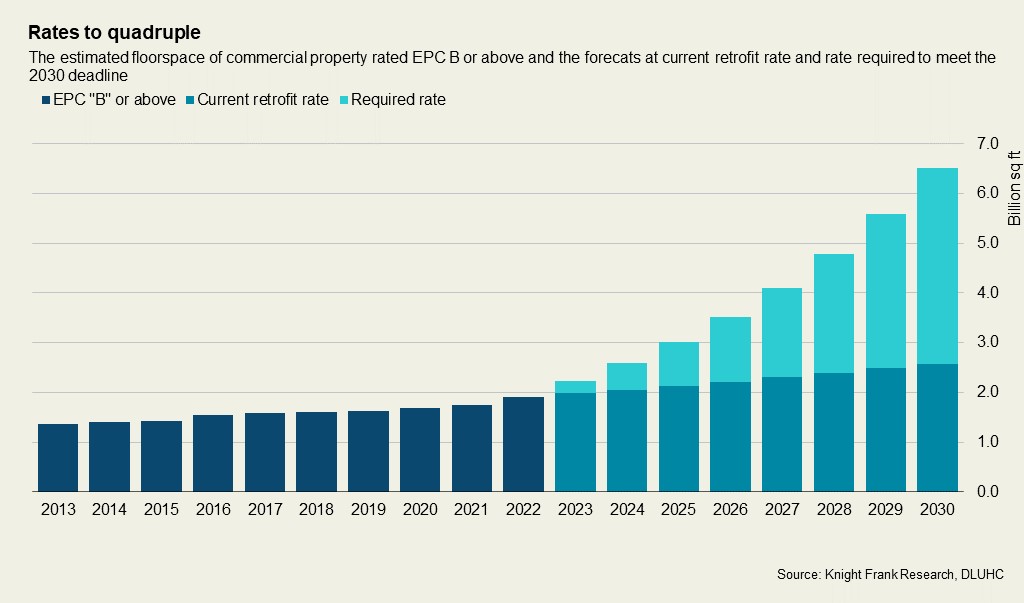UK commercial property retrofit rate needs to quadruple to meet proposed regulation
With the Minimum Energy Efficiency Standards set to tighten by 2030, we estimate that as much as 70% of commercial property space could be at risk of non-compliance.
2 minutes to read
What is more, to meet the target, the current retrofit rate will need to quadruple in the intervening years.
From 1 April, all tenanted commercial property buildings across the UK, including shops, offices and warehouses, needed an energy performance certificate (EPC) rating of at least an E under the Minimum Energy Efficiency Standards (MEES). The government has consulted on raising this to a minimum of C by 2027 and B by 2030. Whilst there have been no further announcements, the newly formed Energy Efficiency Taskforce met in March for the first time and may see some movement in this space.
We crunched the numbers and estimated that some 5% of commercial property fails to meet current requirements. If this does rise to EPC B by 2030, this will grow that figure to 70% of all commercial space. The office sector is most exposed where 79% of floor space is currently below the EPC B level.
Localised impact
Below is a map demonstrating the local authorities which face the most significant problems. The percentage of current unlettable properties (EPC F and below) varies widely between local authorities, ranging from 0.5% in Eastleigh to 18% in North Norfolk.
From 2027, if the minimum required rises to EPC C, the percentage of unlettable properties increases substantially, with more than a third of properties becoming unlettable in many local authorities. By 2030, the proportion of unlettable properties will reach 70% or higher in many local authorities, with some exceeding 80%. The local authorities with the highest percentage of unlettable properties from 2030 (EPC C and below) are Staffordshire Moorlands (88%), Maldon (87%), and Forest of Dean (86%).
Urgent action to retrofit required
Based on current stock levels, the retrofit rate would need to quadruple, from around 3.9% to 16.6% to meet the 2030 target. To add context, that is 576 million sq ft of commercial space needing to be upgraded annually.
In 2022, 152 million sq ft of commercial space achieved an EPC rating of B or above, indicating a significant way to go.

It is not only commercial property that faces a mammoth task. UK residential property faces similar pressure, although the timescale is somewhat different and even less defined as we explore here. The most significant hurdle, as ever, is cost, and with the rising cost of borrowing, the challenge becomes more complex. Yet the cost of inaction also needs to be considered and is something we will continue to delve into over the coming months.